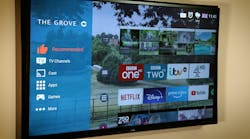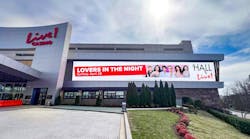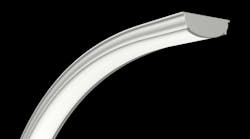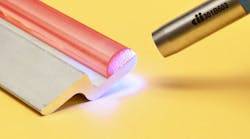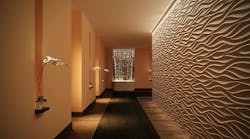Date Announced: 23 Oct 2009Harvard study: new type of light boosts mood and energy level in long, dark wintersAmsterdam, The Netherlands - On the brink of this year's switch to Daylight Saving Time on October 25,1 days notably start to shorten and the intensity of sunlight decreases. Due to a lack of light in this period people experience mood and energy problems, symptoms that can indicate a condition called winter blues. A recent Harvard study revealed that exposure to a new specialized type of light can help alleviate the loss of energy and low spirits and restore people's summer mood and summer energy level. Because this new light is so efficient, high intensity lighting is no longer required, which allows for portability and greater access to light therapy.The Harvard Medical School recently published a scientific paper that confirmed that exposure to a low level of blue light can be as effective in treating symptoms such as mood swings and low energy levels as exposure to the intense bright white light that is used in traditional light therapy.2 The specific type of blue light closely resembles the natural light of a blue summer sky and is known to be mainly responsible for regulating our mood, sleep and energy levels. The use of this blue light with a low intensity level has important advantages over the traditional white-light treatment: it allows for smaller, portable light therapy devices that can be used anywhere. Also, the light intensity of the therapy can be reduced to more comfortable levels. Traditional white light boxes for example produce a 10,000 luxbright white light, whereas a device that uses the effective blue light only produces 200 lux. Winter bluesWinter blues is a condition that affects large groups of people worldwide, especially in countries with long and dark winters. Mood problems and lack of energy typically start in autumn and may last well into the spring. The condition is more common among women than men: three to four times the number of women than men are afflicted. Depending on a country's latitude, it is estimated that 15% up to 20% of the population suffers from these seasonal mood swings. This percentage is somewhat lower for southern countries. An example, the rate of winter blues in the US is 14%, while Finland's prevalence is 18.4%.3Common symptomsThe symptoms of winter blues are seasonal and are similar to ordinary ailments: mood and energy problems, fatigue, increased appetite, carbohydrate craving, weight gain, concentration difficulties and sleep problems. As a result of these common symptoms, it could be that the number of people troubled by one or more symptoms of winter blues iseven higher than the prevalence data show. The impact on both the physical as well as the psychological well-being of those affected by winter blues can be substantial. The power of lightLight therapy has proven to be the most effective treatment for fighting the winter blues. Over the past 20 years, many studies involving thousands of patients, have demonstrated the superiority of light for treating winter blues. Scientists agree that winter blues and related problems result from the lack of light and patients respond to light therapy quicker than to other treatments. Prof. Dr. Kasper, Chair of the Department of Psychiatry and Psychotherapy of the Medical University Vienna: "Light boosts and improves mood and energy levels, increases alertness, has an energizing effect, regulates circadian rhythm (our internal body clock) and helps with sleep problems. It is therefore an indispensable treatment for effectively fighting such symptoms."Light therapy at homeOver the years light therapy has become more accessible to a larger group of people. Whereas a few years ago, light therapy was only available in specific institutes and centers, people increasingly use light devices at home for light therapy purposes. The recent Harvard Medical School study of light therapy devices for domestic use showedthat low levels of blue light can produce therapeutic results. Over 80% of the people tested showed a decrease in symptoms after just one week of light therapy. Daniel Adams, a senior application scientist of Philips, says: "As a leading company in the area of Health and Well-being, Philips integrates technologies and design into people-centric and meaningful solutions. Based on consumer insights and the proven effectiveness of blue light, Philips developed a portable light therapy device (goLITE BLU HF3330) that provides a comfortable level of the right color of blue light to improve people's mood and increase energy and alertness. The goLITE BLU is portable with a rechargeable battery so it can be used simply anywhere, at home, at the office and while traveling." Winter blues and winter depressionWinter blues should not be confused with winter depression. Winter blues is the milder form of winter depression (or SAD, Seasonal Affective Disorder). People with winter blues notice they are just dragging, not getting their work done, and generally feeling unhappy. Carbohydrate and sugar cravings are also common. These people may also notice moodproblems but are not fully depressed. If one feels depressed, he or she should only use light therapy after seeking medical advice. REFERENCES1. European Date2. J.L. Anderson, C.A. Glod, J. Dai, Y. Lux vs. wavelength in light treatment of Seasonal Affective Disorder. Acta Psychiatrica Scandinavica 2009;120: 203-2123. Levitt, AJ et al. A comparison of open treatment of seasonal major and minor depression with light therapy. Journal of Affective Disorders 71 (2002) 243-248
Contact
Santa van der Laarse Philips Corporate Communications
E-mail:[email protected]
Web Site:www.usa.philips.com


